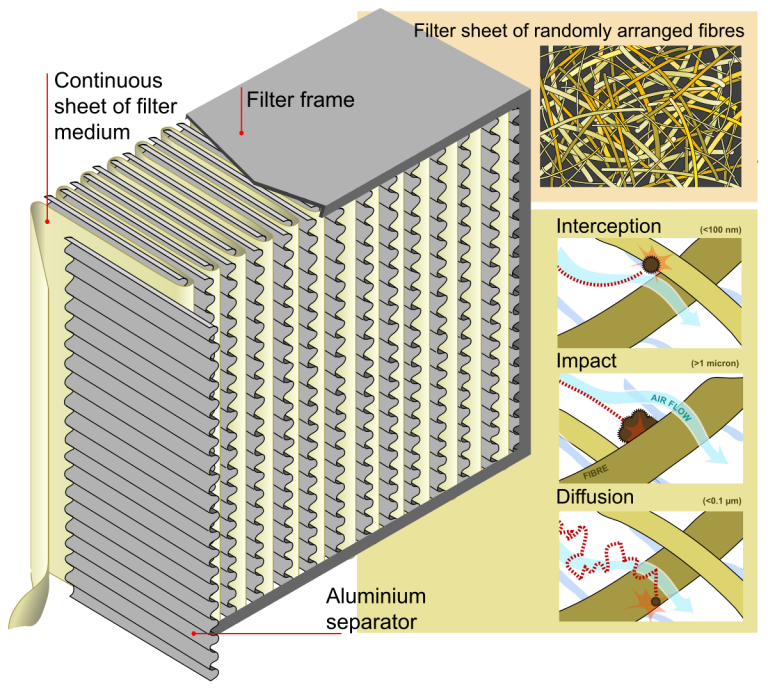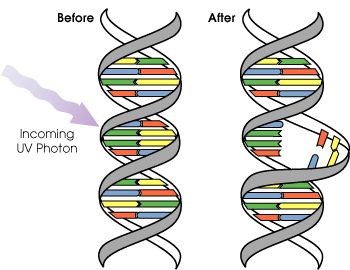An air purifier for covid-19(HEPA Filter paper)
1.HEPA filter technology
HEPA (High efficiency particulate air filter), that is, high efficiency air filter, HEPA is characterized by air can pass, but fine particles can not pass. Its highest level system can reduce the particle density to 1 million times that of normal indoor air.
Figure 1 Principle of HEPA air purification
The grade of the filter depends on the filter particle size of the filter layer and the filtration efficiency. Some critical occasions require the highest level of filtration systems, such as medical operating rooms, semiconductor manufacturing plants, etc. But for most scenes, medium and high-grade filters can take into account the balance of interception efficiency and air flow. After investigation, we have selected HEPA13 grade filters (filter grades include filter grades: H11-H14, U15, U16 (EN1822)) to purify the air in public applications.
2. What is the effect of ultraviolet rays on viruses and bacteria?
Sunlight consists of light of different wavelengths, ranging from infrared (heat) to visible light to ultraviolet (sunburn). Experimental studies have long shown that ultraviolet rays can effectively destroy infectious bacteria. Specifically, ultraviolet rays are divided into three ranges, and the lower the wavelength, the higher the energy. UV-A can cause skin tanning, and over time, it will accelerate skin damage and aging. Ultraviolet-B can cause sunburn, but it is also necessary for synthetic humans to produce vitamin D. Ultraviolet-C is the highest energy ultraviolet band, which is filtered out by the ozone layer in the atmosphere. If there is no ozone layer, we need to live indoors. It is harmful to any life exposed to the ultraviolet-C band.
The ultraviolet-C band can damage DNA and RNA at the molecular level. The effect is most significant at ultraviolet wavelengths around 250nm. Therefore, the ultraviolet-C band can be used to irradiate the virus to kill or prevent the virus from replicating and prevent the spread of the disease.
Figure 2 Ultraviolet rays change the structure of DNA/RNA (Source: NASA)
When mercury vapor is excited by an electric current, it emits 253.7nm ultraviolet light. This has been used for fluorescent lamps for a long time. This emission will cause the phosphor coating in the light bar to fluoresce, thereby converting ultraviolet rays into visible light, which can be used for lighting. The UV-absorbing coating can prevent any stray radiation. Mercury-based UV-C lamps use exactly the same principle, but instead of phosphors, they use non-UV-absorbing glass, which allows UV-C to be released. One disadvantage of mercury lamps is that they also emit at 185nm, which will produce ozone, the tri-molecular form of oxygen. Although it protects us from ultraviolet rays at high altitudes and acts as a fungicide in some applications, ozone is also a respiratory irritant and pollutant. Therefore, most UV-C bulbs are treated to absorb 185nm emission. Ultraviolet rays can also be generated by light-emitting diodes (LEDs), and their efficiency and lifetime are constantly improving.